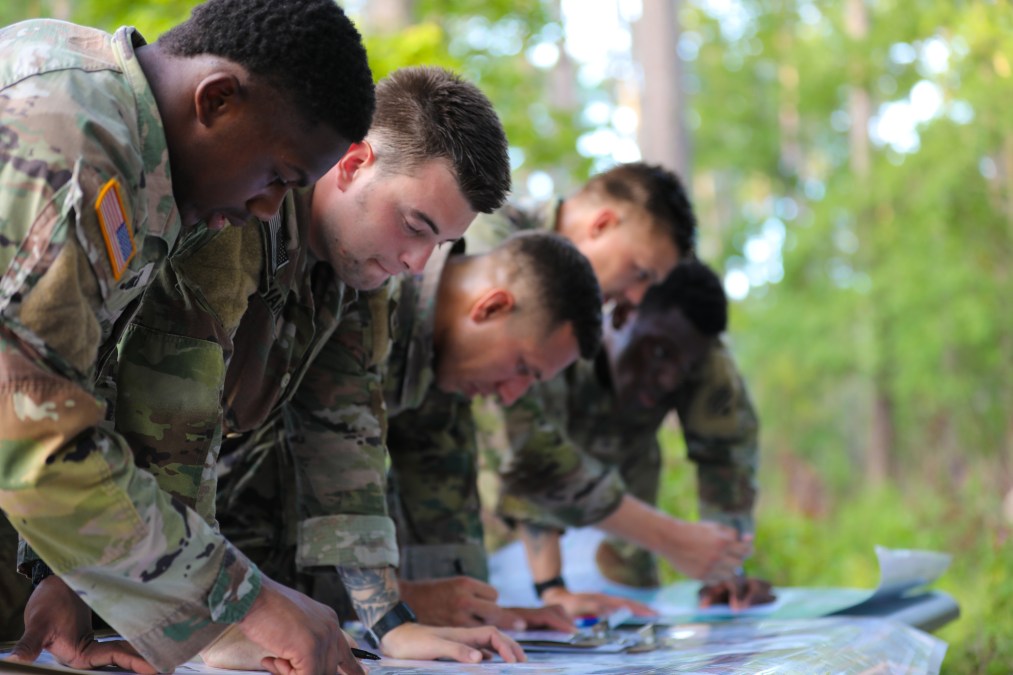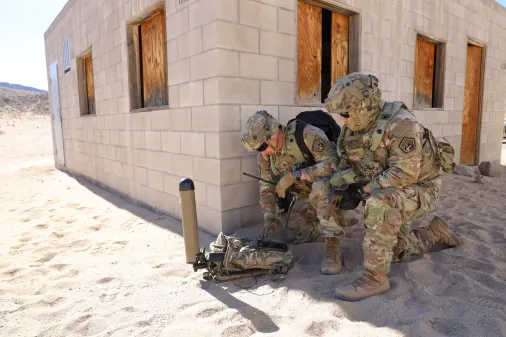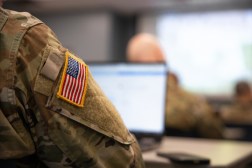Army working to game concepts, exercise forces for the information environment

BALTIMORE, Md. — The Army plans to have its doctrine for information finalized by the end of this summer, while in the interim, continuing to exercise forces and concepts associated with its broader push in the information space.
The service for several years has been building out its doctrine for information advantage, the Army’s parlance for information warfare.
“We’re on target for the end of the summer” to complete that work, Maj. Gen. Paul Stanton, commander of the Army Cyber Center of Excellence, said in an interview with DefenseScoop at the AFCEA TechNet Cyber conference, regarding the Army Doctrinal Publication 3-13, Information Advantage.
The Army has been working on this concept and doctrine for at least five years, initially charting down information warfare, but in 2020 shifting to information advantage. Information advantage has five broad pillars: enable decision-making, protect friendly information, inform and educate domestic audiences, inform and influence international audiences, and conduct attack operations.
While it is tied in with the joint community — which recently revised its doctrine for information in joint operations in September 2022 — and some of the efforts of the other services, Stanton said the Army has one key departure from other Defense Department components.
“We refer to the ‘information dimension’ of the operating environment and the joint world refers to the ‘information environment.’ We adamantly believe in the Army that there’s one operational environment and information is the dimension therein,” he noted. “We think that that’s important because we need commanders to think about the totality of their operating environment and not ignore information — they can’t because it is a dimension within which they have purview and responsibility.”
While the Army has been drafting the doctrine, which Stanton said has been in worldwide staffing twice, it has sought lessons from the real world as well as exercises to inform its information concepts, and will soon be delivering on products associated with doctrine, organization, capabilities and personnel.
This summer, the service will be using the exercise Pacific Sentry to determine if it has developed theater information advantage detachments correctly. These organizations are envisioned to be aligned to theater armies and coordinate with other theater-level organizations such as the multi-domain task force and expeditionary cyber teams.
The assessment team — made up of personnel from Training and Doctrine Command, the deputy chief of staff for operations, Army Cyber Command and Army Special Operations Command — will determine: “Are we right, are we not right, how close are we, where are we short, where do we need to apply our focus across [doctrine, organization, training, materiel, leadership, education, personnel and facilities] based off of how effective the theater information advantage detachment is during the exercise?” Stanton said.
The theater level makes the most sense to place these personnel and forces, Stanton said, because most of the authorities for these effects reside there.
“The theater Army is our conduit and our tie in into the meetings and working groups at the combatant command such that we can inform them, ‘Hey, here’s something that we’re interested in doing, will you, geographic combatant commander, approve and delegate the authorities?’ Now that you will, the theater information advantage detachment has the ability to deliver the effect,” Stanton explained.
The service is placing a great deal of importance on these entities and the information space writ large.
“We’re also recognizing the importance of information operations. We’re building theater information advantage detachments, so we’re going to have those capabilities in the Army. This is how we’re getting ready for the next fight. We’re going to build these organizations with a flat budget and a flat end strength,” Army Chief of Staff Gen. James McConville said at the McAleese and Associates Defense Programs Conference in March.
The service has a similar entity for U.S. Army Europe and Africa, though that organization is called a theater information advantage element. Stanton said they will be assessed next year.
Meanwhile. in the Pacific, the Army is working collaboratively with Fleet Information Warfare Command Pacific (FIWC PAC), the Navy’s information warfare element.
“They’re entirely coordinated alongside us in building out the plan and the assessment. Frankly, they want to watch what we do, take our homework while we watch what they do, take their own — but we’re absolutely sharing the information,” Stanton said.






